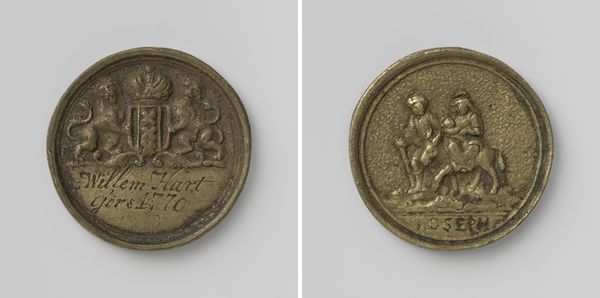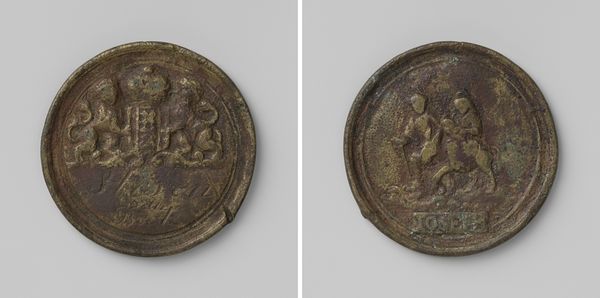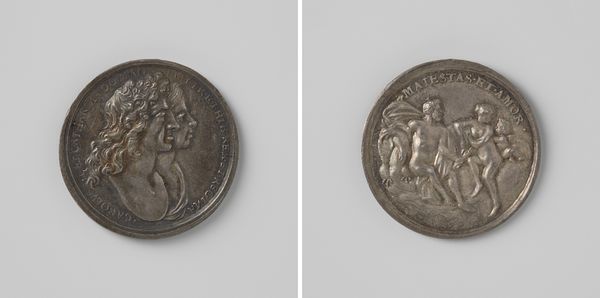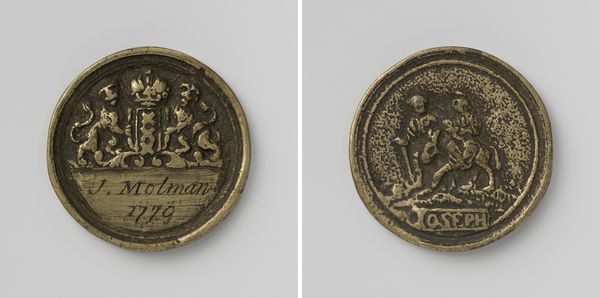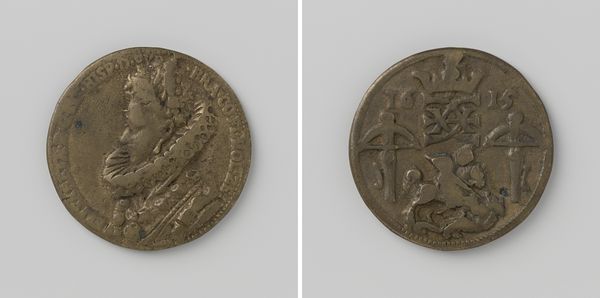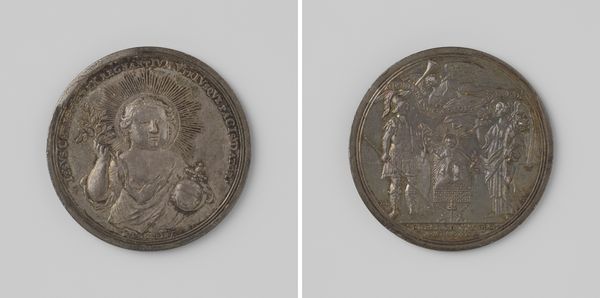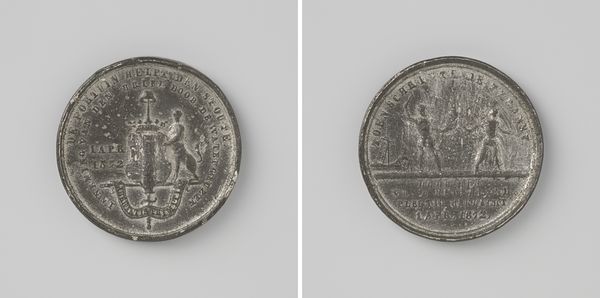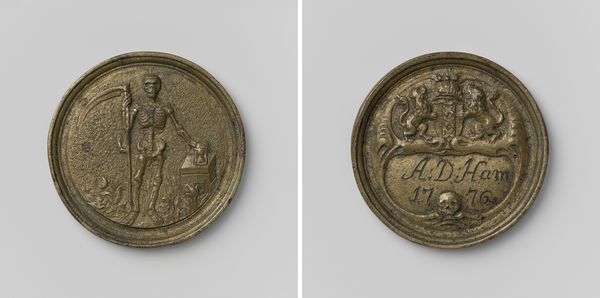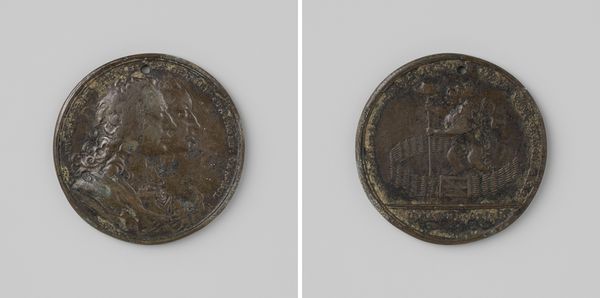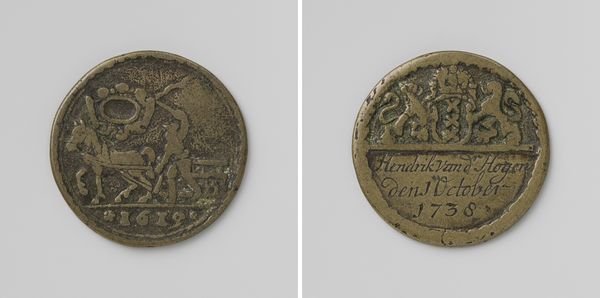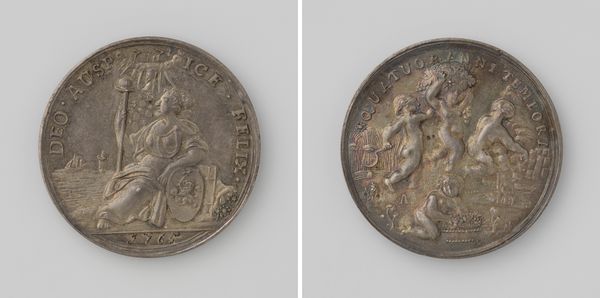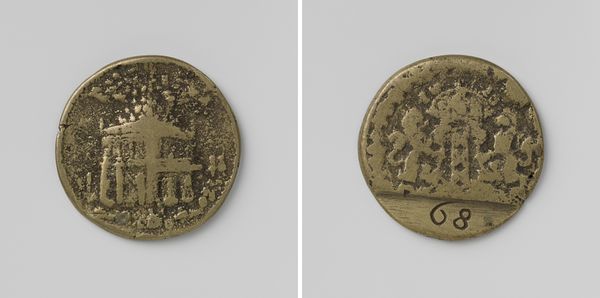
Spek- en varkensslagersgilde van Amsterdam, gildepenning van Paulus Habel 1779
0:00
0:00
Dimensions: diameter 4.1 cm, weight 32.27 gr
Copyright: Rijks Museum: Open Domain
Editor: Here we have a bronze guild badge from 1779, crafted by Lucas Cloppenburg for Amsterdam’s pork butchers guild. It has such an antiquated feel... I'm curious about what stories it might be telling. How do you interpret this work, especially considering its symbols? Curator: This medal is teeming with symbolism related to its intended audience. Notice on one side, the coat of arms with the crowned lions, alluding to civic authority and perhaps a sense of pride. Guilds were crucial for regulating trade and maintaining standards. Now, look at the other side... what strikes you? Editor: Well, it looks like someone butchering a pig. Is there any specific narrative being portrayed? Curator: Indeed! The imagery presents a moment intimately tied to the guild's purpose. It isn't merely descriptive, it's commemorative and assertive. This symbolizes a crucial aspect of the guild members’ identity. These are more than butchers. The act is also their livelihood, cultural heritage and legacy. These guilds operated almost as families. Think about that! How did visual cues like these help foster group cohesion, shared values, and the transmission of artisanal knowledge? Editor: That is intriguing. So it served not just as identification, but as a kind of symbolic representation of shared values. It also illustrates that work and identity are entwined. Thank you for drawing attention to these nuances; I'll never view everyday imagery the same way again. Curator: Exactly! Understanding symbols opens up avenues to deciphering what mattered to people of a particular era and social sphere, connecting us across time.
Comments
No comments
Be the first to comment and join the conversation on the ultimate creative platform.
